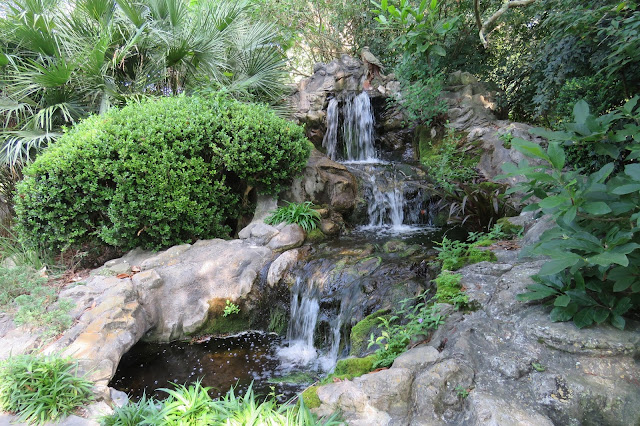Day 45: Lafayette to New Orleans
Today we
travelled into the state of Loiusiana. Louisiana
was French owned, named for the Sun King, Louie XIV. It became part of the USA with the Louisiana Purchase in 1803,
when under President Thomas Jefferson, USA bought all the land west of the
Mississippi from Napoleon, thus nearly doubling the size of the US.
For this
tour, today was unusual in that none of our activities were directly related to
music. We went first to St Martinville,
where there is a tribute to Longfellow’s poem ‘Evangeline’. While driving there, Peter told us the real
story and then the story as told in Longfellow’s poem.
The story
is related to the Arcadian people who were forced to leave Nova Scotia in 1755
because they refused to forsake their French language, laws and customs when
Britain took over that part of Canada.
The real story of the couple in this epic poem is that lovers Louie and Emiline were separated when Louie fled Nova Scotia for this part of Louisiana, which was then controlled by the French. Louie waited and waited several years for Emiline to join him but never did she come. Eventually he married someone else. When Emiline did eventually come some years later, Louie had to break the news to her that he was married and in love with someone else. This meeting took place under a tree in the little town of St Martinville. Emiline apparently died of a broken heart.
This tragic
story remained as oral tradition and unknown outside the Arcadian (Cajun)
community until Longfellow heard the story and adapted it in the form of an
epic poem. He changed the names to
Evangeline and Gabriel and had their separation as several weeks instead of
years. He also changed the outcome of
the story, having Evangeline becoming a nun once Louie had broken the news to
her. On his death bed, Louie was nursed
by Evangeline, who recognised him just before he died.
The Evangeline Tree, immortalised in the 1847 poem by American Poet, Henry Wadsworth Longfellow
Statue of ‘Evangeline’ outside
St Martin de Tours Catholic Church, St Martinville, Louisiana
St Martin de Tours Catholic Church, St Martinville, Louisiana
On the Bayou Tech, St Martinville, Louisiana
Next we visited McGees’ swamp tours, where we had a most relaxing hour or so gliding slowly along the Atchafalaya Swamp.
Spanish moss clings to the tress in the swamp
Close up of Spanish Moss – soft but full of bugs. The slaves used it to make a mattress but they soon realised that it needed to be boiled to get rid of the bugs.
Spanish moss was, some believe, used to stuff the upholstery on the first Ford motor cars. Wiley Henry Ford had it shipped in timber crates made from cypress timber, local to the south. He valued the shipments not so much for the Spanish Moss but for the cypress in the crates, which he used to make the floor and running boards for his cars! (I looked this story up on the internet and find that it may well be an urban myth - but it does make a good story!)
Great example of one-point perspective to show my students
Alligator sunning himself – until he spied our boat.
Water levels were unusually high causing the appearance of the swamp to be less dramatic than it usually is.
House boat on the Atchafalaya Swamp
This family-run business has recently been purchase by the Boy Scouts of
America. Within a couple of weeks, this
building will be demolished, making way for a new, state-of-the-art facilty for
the Scouts.
Collector’s item maybe?
We passed by (literally) Baton Rogue, the capital of Louisiana
and on to Houmas House Plantation. We were now in sugar country.
At Houmas House, we saw nothing of the degradation of its slaves – only the grandeur that its owners lived in. The house was originally built in 1774 as a humble dwelling.
In the 1820s, a new house was built beside the
original….
…with a carriageway later built to connect the two.
The original house then became the kitchen.
This was the ‘single man’s quarters’ for the mansion. We came to know this as typical French architecture, with the very pointed dome roof.
The mansion
has been faithfully restored by its current owner.
This rather strange portrait is typical of its time. It was pre-painted with space left for the faces to be added for the buyer when he came along!
Duelling pistols
Solid silver statue of Abraham Lincoln – (not
that he was any hero in these parts)
The real Tiffany deal
Table top gambling game. Set the horses in motion and bet on the
winner!
Did they have any realistic view of the life of their slaves?
Map of the plantations along the Mississippi River
I can't claim this photo or the next one - they are both postcards bought at Homous House.

























































No comments:
Post a Comment